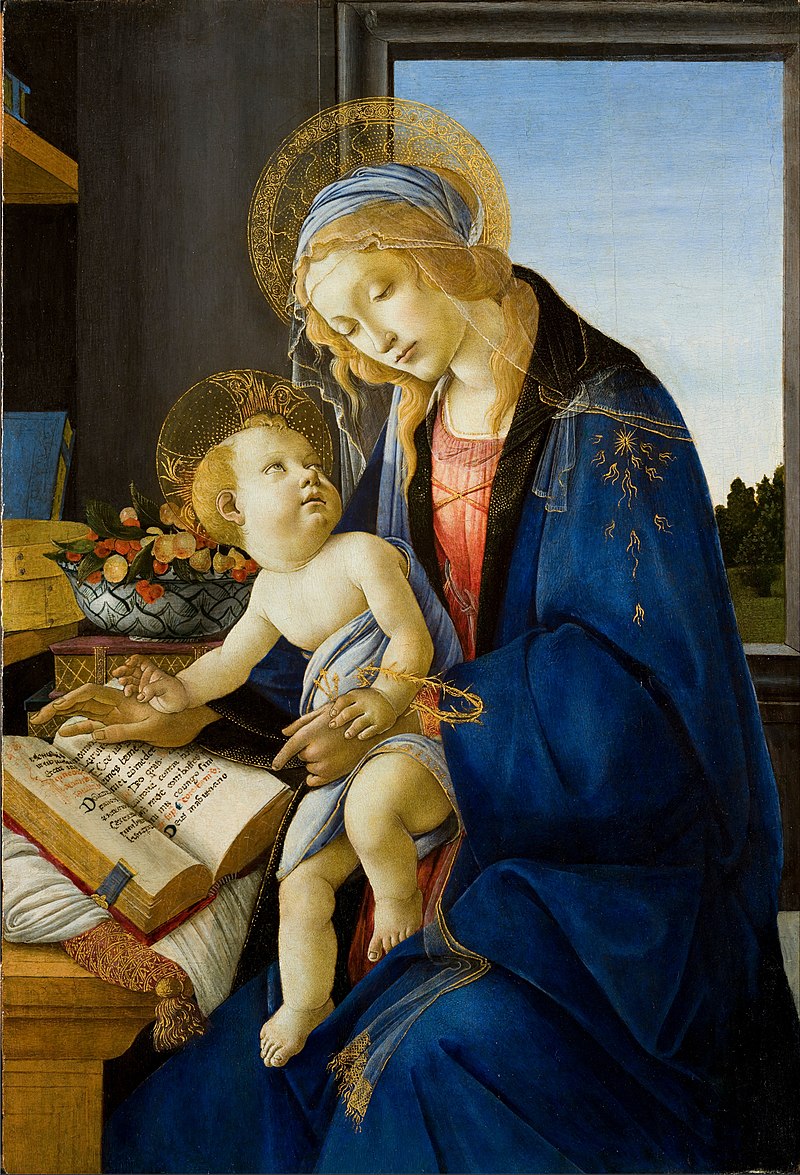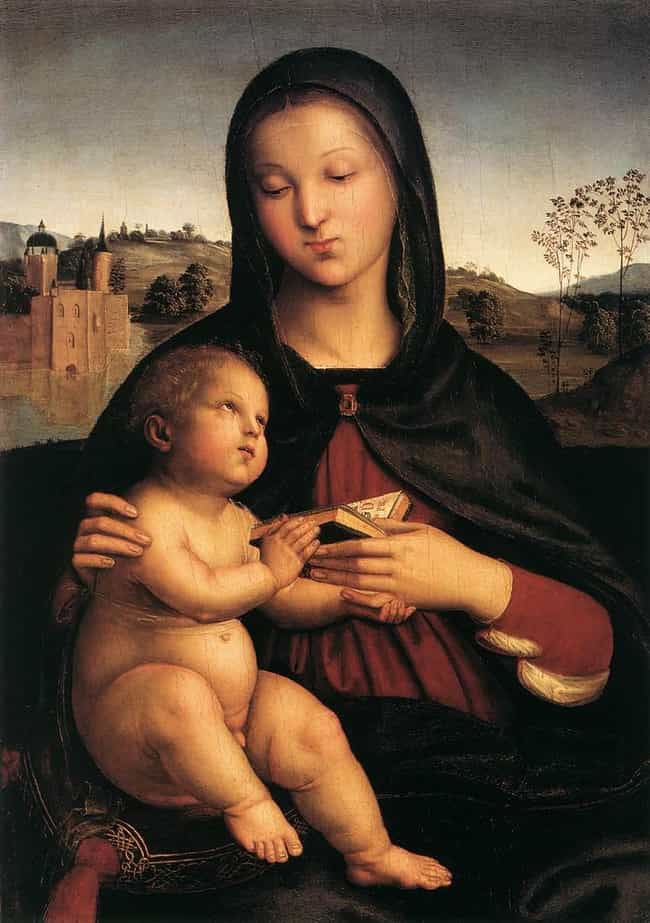You are currently browsing the tag archive for the ‘Our Lady’ tag.
A sermon preached at Niles Discovery Church, Fremont, California,
on Sunday, June 2, 2019, by the Rev. Jeffrey Spencer.
Scriptures: Mark 3:19b-35 and John 19:25b-27
Copyright © 2019 by Jeffrey S. Spencer
Months ago, when Pastor Brenda and I were planning this Easter season sermon series on women from scripture, I suggested that we needed in include Mary, the mother of Jesus, perhaps even concluding the series with her. The book we used as inspiration for this series focuses on women from the Hebrew Scriptures, so it didn’t include Mary. I don’t know what it was that made me think we should include Mary. Whatever it was, I’m grateful.
I’m grateful for a poetic reason. Mary has been seen as the new Eve, and we started the series with Eve. The name “Mary” is a version of the name “Miriam,” the name of Moses’ sister and the second person in our series. Focusing on Mary, Luke’s narrative of the birth of Jesus mirrors the story of Hannah and the birth of Samuel. Like Esther’s brave “Yes,” Mary’s “Yes” to God changed the world. The only woman in the series that isn’t clearly paralleled in Mary is Deborah. And now that I’ve brought up Deborah, there’s a poetic closure to the series by including Mary.
I’m also grateful that we’re including Mary because my relationship with the mother of Jesus has been, well, distant. It’s like I unpack her from storage like a figurine in a nativity set each Advent and then pack her away as soon as Christmas is over. I’ve been doing some reflecting on this relationship and I’ve come to realize that it’s rooted in some New England Protestant anti-Catholicism I haven’t realized I’ve been carrying all these years.
I always knew Mary was a big deal for Catholics. As Richard Rohr points out in his book The Universal Christ, Mary’s been given special names by the church over the centuries: Queen of Heaven, Notre Dame, Our Mother of Sorrows, Our Lady of Perpetual Help, And “Our Lady of just about every village and shrine in Europe.”[1]
And somewhere along the line I got the notion that Catholics pray to Mary which seemed sacrilegious – after all, Mary isn’t God. That notion was corrected. Catholics pray through Mary. But praying through Mary seemed pointless – why go through middle management when you can talk directly to the CEO? We can unpack that prejudice in another sermon. And then there are all those statues and paintings – at some point, isn’t that idolatry? Another prejudice to unpack at another time. You can see why, given these prejudices, by mid-January, I pack Mary away for another year.
Rohr points out that it is precisely because Mary wasn’t/isn’t God that she is important. “In the many images of Mary, humans see our own feminine soul,” he writes. “We needed to see ourselves in her, and say with her, ‘God has looked upon me in my lowliness. From now on, all generations will call me blessed’ (Luke 1:48).”[2]
I started to get a better Protestant sense of the importance of Mary at a two-day conference in San Francisco I attended in early April. The headliners for the conference were Nadia Bolz-Weber and Rachel Held Evans. During the conference, Evans said something that evoked an image very different from those I tend to have of Mary.
Mary “has been loved for centuries for being ‘good,’ the docile picture of purity and virginity. As a matter of fact, some church doctrines have been written to say that unlike other women, Mary was born without sin. Which, of course, implies that God could never choose to make God’s home in the womb of an actual woman, since we know that actual women are sinful, fleshy temptresses,” to quote Bolz-Weber.[3] This packaging of a sinless, pure, meek and mild Mary – who actually was an unwed, teenaged, peasant, Palestinian Jew – made painters depict Mary like this.


Unfortunately, this does the exact opposite of what Rohr says is important about Mary. These images make Mary less and less like us. At least in my opinion.
In contrast, the image Evans evoked was of a mom holding her crying baby, completely focused on comforting him, while baby spit-up dries in her hair and on her shoulder. In a blog post she wrote three years ago when her first child was a newborn, Evans reflected: “I’ve been thinking: … In Jesus, God was once a baby – a baby who nestled in a woman’s womb, a baby whose life depended on a woman for nourishment, a baby who fell asleep on a woman’s chest, a baby whose first word could very well have been, ‘mama.’
“Think about that. God kicking through a woman’s pregnant belly, God nursing from a woman’s breasts, God furrowing his brow and concentrating with all his might to form the word ‘mama,’ God releasing a cute baby belly laugh, God wailing late into the night.
“The miracle of the incarnation … [is] that God became human – with all of a human’s weaknesses, dependencies, and interconnectedness. If anything, the incarnation reminds us just how much we belong to one another and need one another, how our shared humanity means no one is more important by virtue of gender or status.
“Sure, when God became flesh, God became a man. But that man was once a baby who needed his mama. And that baby grew into a man who surrounded himself with women who were his students, his ministry partners, and his friends. And when that man was crucified and buried and abandoned by men, it was the women who came with the spices, the women who got the first glimpse of resurrection.”[4]
At the conference, Evans echoed these ideas. She pointed out that long before Jesus could say, in fact, in order for Jesus to be able to eventually say at the Last Supper, “This is my body, for you,” he needed Mary to say, “This is my body, for you.” God needed a woman to feed God before God could feed us.
“Tradition holds that Mary suffered seven sorrows: her flight to Egypt to escape the infanticide, Simeon’s prophecy that her heart would be pierced, those panicked days in Jerusalem when she thought she had lost Jesus in the crowd, walking with Jesus to Calvary, watching her son’s execution, holding his body in her arms, and placing him into the cold tomb.”[5]
Rachel Held Evans points out that there would have been many other sorrows “for Mary along the way: when her son left home to travel and teach, when he nearly killed himself fasting for forty days in the wilderness, when whatever happened to Joseph happened to Joseph, when Jesus responded to the announcement of his mother’s presence by saying to his disciples ‘Who are my mother and my brothers? Whoever does God’s will is my brother and sister and mother.’ He was making a point, she must have known, but still, it had to pierce her heart a little.
“And as every mother knows, Mary also experienced the quotidian sorrows of motherhood: the first bruised knee, the unkind words of other children, the frightening illnesses, the surprised eyes of a little boy the first time he witnesses injustice, cruelty, or the suffering of another, the gifts she wished she could give him, the memories she wished she could preserve forever, the disappointments she wished with all her heart she could stop.
“Sometimes I imagine Mary breathlessly recounting Simeon’s strange prophecy to her friends while they nursed together under the shade of a tree, only to hear the mothers in the group laugh and say, ‘What kind of prophecy is that? You are a mother! Of course your heart will be pierced. It will be pierced every day.’
“Fittingly, Mary watched her son’s crucifixion in the company of other mothers. The Gospel writers describe them as being both ‘at a distance’ and close by. At one point, Jesus looks at his mother and says, ‘Woman, here is your son.’ …
“In this moment, when Mary’s eyes locked with the eyes of the boy she once nursed, once tickled, once watched fall asleep, I imagine that Jesus understood the suffering of mothers, perhaps the most powerful suffering of all.
“Mary was not the first, nor the last, mother to hold the broken body of her child in her arms. She was not the first, nor the last, to weep in the company of mothers as they stumbled their way to an open grave.
“It happens every day – when famine claims another little life, when the sudden arrival of blood represents the end of a pregnancy, when cancer strikes yet again, when the phone rings and the news is bad.
“It is a pain that pierces the heart.”[6]
I’m grateful we included Mary in this sermon series because including Mary has forced me to examine some of my hidden prejudices, and including Mary has invited me to consider how I look at images of Mary. And I have found that I want the gritty images of Mary. Give me the images of the mom with drying baby spit-up in her hair. Give me the images of the mom desperately trying to protect her son – when he was a child and when he was an adult. Give me the images of the mom who is heartbroken at the death of her child. Give me the images of a Mary who is one of us, and who reminds me that you and I find favor with God, too.
Amen.
Questions for Quiet Reflection:
In what ways – emotionally, spiritual, physically – does your story connect with Mary’s story?
How might a deeper relationship with Mary deepen your relationship with God?
_______________
[1] Richard Rohr, The Universal Christ (New York: Convergent Books, 2019), 122-123.
[2] Ibid, 124.
[3] Nadia Bolz-Weber, Accidental Saints: Finding God In All the Wrong People (New York: Convergent Books, 2015), 67.
[4] Rachel Held Evans, “God Needs Women,” Rachel Held Evans, https://rachelheldevans.com/blog/god-women-incarnation (posted 6 July 2016; accessed 30 May 2019).
[5] Rachel Held Evans, “Women of the Passion, Part 2: Mary’s Heart is Pierced (Again),” Rachel Held Evans, https://rachelheldevans.com/blog/women-of-the-passion-mary-pierced-heart (posted 6 April 2012; accessed 30 may 2019).
[6] Ibid.



